|
|
The Holy Martyrs Menodora, Metrodora and Nymphodora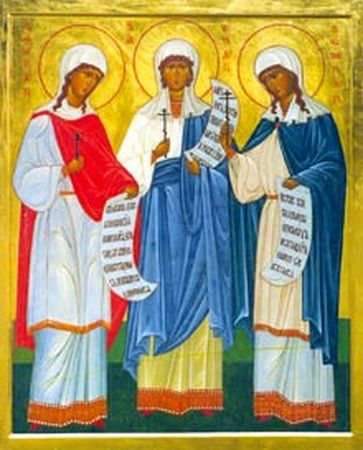 They were three sisters from some place in Asian Bithynia. Brought up in a Christian spirit, they withdrew from the city into the desert, desiring to lift up their minds to God and free themselves from the illusory world, and thus to live their lives in purity and virginity as true brides of Christ. They gave themselves to fasting, prayer and toil, and God adorned them with the gift of wonderworking. When people began to bring the sick to them for healing, they became known against their will. A certain governor, Fronton, heard of them and brought them to trial. Seeing them, the governor was amazed at their beauty, for, although they were nuns and their bodies were withered, their faces were radiant, illumined by an inner peace and the grace of God. The governor at first flattered them and promised to send them to the Emperor, who would give them in marriage to his nobles, but, when he realised that his flattery and promises were having no effect on these brides of Christ the Lord, he ordered that Menodora be put to torture and her sisters be thrown into prison. After harsh torture, the governor cried to Menodora, all wounded and covered in blood: "Offer sacrifice to the gods!" To this the holy martyr replied: "Don"t you see that I am doing nothing but offer myself in sacrifice to my God?" When she expired under torture, the governor brought out her two sisters and stood them beside Menodora"s dead body, and, pointing to it, urged them to deny Christ. As they remained steadfast, he tortured them to death. At that, a thunderbolt fell from the sky and killed the soul-less Fronton and his servants. Christians buried the bodies of these holy martyrs, who suffered some time between 305 and 311, in the time of Galerius, and entered into rest in the Kingdom of Christ. They were three sisters from some place in Asian Bithynia. Brought up in a Christian spirit, they withdrew from the city into the desert, desiring to lift up their minds to God and free themselves from the illusory world, and thus to live their lives in purity and virginity as true brides of Christ. They gave themselves to fasting, prayer and toil, and God adorned them with the gift of wonderworking. When people began to bring the sick to them for healing, they became known against their will. A certain governor, Fronton, heard of them and brought them to trial. Seeing them, the governor was amazed at their beauty, for, although they were nuns and their bodies were withered, their faces were radiant, illumined by an inner peace and the grace of God. The governor at first flattered them and promised to send them to the Emperor, who would give them in marriage to his nobles, but, when he realised that his flattery and promises were having no effect on these brides of Christ the Lord, he ordered that Menodora be put to torture and her sisters be thrown into prison. After harsh torture, the governor cried to Menodora, all wounded and covered in blood: "Offer sacrifice to the gods!" To this the holy martyr replied: "Don"t you see that I am doing nothing but offer myself in sacrifice to my God?" When she expired under torture, the governor brought out her two sisters and stood them beside Menodora"s dead body, and, pointing to it, urged them to deny Christ. As they remained steadfast, he tortured them to death. At that, a thunderbolt fell from the sky and killed the soul-less Fronton and his servants. Christians buried the bodies of these holy martyrs, who suffered some time between 305 and 311, in the time of Galerius, and entered into rest in the Kingdom of Christ.St Pulcheria the Empress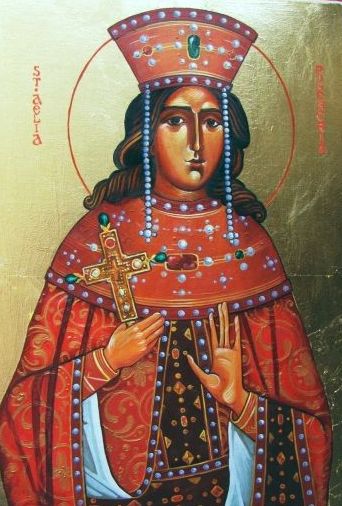 Daughter of the Emperor Arcadius, she vowed to remain in perpetual virginity, and, as an earnest of this vow, had a table of gold and precious stones made for the cathedral. She reigned together with her brother Theodosius the Younger, and was greatly zealous for the Orthodox faith. It was at her instigation that the Third Ecumenical Council in Ephesus was summoned, which condemned the Nestorian heresy. She built the famous church of the Mother of God at Blachernae in Constantinople. After Theodosius"s death, she married Marcian, who was chosen as Emperor, and lived with him as a brother. It was she who found the relics of the Forty Martyrs of Sebaste. She entered into rest in the Lord on September 10th, 453, at the age of fifty-five. Daughter of the Emperor Arcadius, she vowed to remain in perpetual virginity, and, as an earnest of this vow, had a table of gold and precious stones made for the cathedral. She reigned together with her brother Theodosius the Younger, and was greatly zealous for the Orthodox faith. It was at her instigation that the Third Ecumenical Council in Ephesus was summoned, which condemned the Nestorian heresy. She built the famous church of the Mother of God at Blachernae in Constantinople. After Theodosius"s death, she married Marcian, who was chosen as Emperor, and lived with him as a brother. It was she who found the relics of the Forty Martyrs of Sebaste. She entered into rest in the Lord on September 10th, 453, at the age of fifty-five.Ss Apollos, Lucius and Clement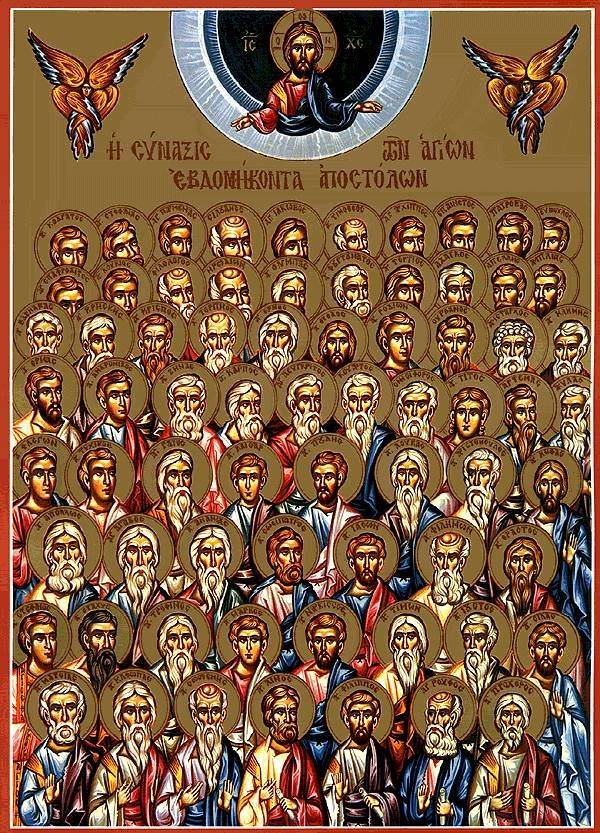 Apostles among the Seventy: Apollos (Acts 18:24-25) was bishop in Smyrna before St Polycarp. St Lucius (Rom. 16:21) was bishop in Laodicea and St Clement was bishop in Sardis. Apostles among the Seventy: Apollos (Acts 18:24-25) was bishop in Smyrna before St Polycarp. St Lucius (Rom. 16:21) was bishop in Laodicea and St Clement was bishop in Sardis.The Three Holy Women of ConstantinopleA noblewoman of Constantinople with her two handmaids, they scorned the vanity of the world and withdrew to solitude, where, after eleven years of asceticism, they entered into rest in the Lord.
Martyr Barypsabas in Dalmatia (2nd c.)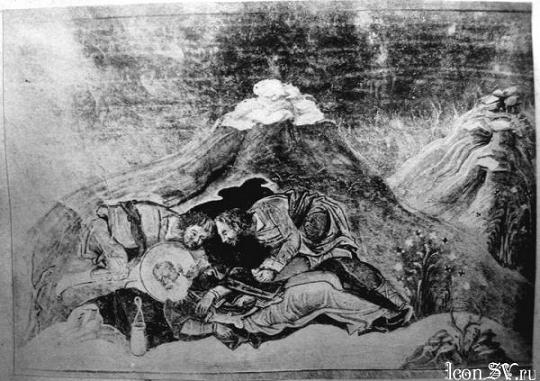 There is a legend, that during the suffering of the Savior on the Cross, a certain Jacob received the blood and water flowing from the side of the Savior in a bowl (tikva) and kept this holy relic for himself. As if he didn't know, he poured olive oil over the blood in the bowl, and through the olive oil performed many healings. After the death of Jacob, this holy relic passed to two desert-dwellers, and on their death to Barypsabas. Adding olive oil to the blood of Christ, Barypsabas performed many healings. Evil people from self-interest killed the holy desert-dweller, took the bowl, but did not find in it what they expected. There is a legend, that during the suffering of the Savior on the Cross, a certain Jacob received the blood and water flowing from the side of the Savior in a bowl (tikva) and kept this holy relic for himself. As if he didn't know, he poured olive oil over the blood in the bowl, and through the olive oil performed many healings. After the death of Jacob, this holy relic passed to two desert-dwellers, and on their death to Barypsabas. Adding olive oil to the blood of Christ, Barypsabas performed many healings. Evil people from self-interest killed the holy desert-dweller, took the bowl, but did not find in it what they expected.Sts. Peter (826) and Paul (9th c.), bishops of NicaeaSaints Peter and Paul were bishops at Nicea. Saint Peter defended the Orthodox faith against the iconoclasts during the reign of Leo the Isaurian (813-820) and endured suffering for this. He died no earlier than the year 823: four Letters of Saint Theodore the Studite to Saint Peter are known of, written in the years 816-823. No account about the life of holy Bishop Paul of Nicea has been preserved. The first that his name is met with is in the so-called "Petrine" Greek Prologue of the XI Century.
Venerable Ioasaph, monk, of Kubensk (Vologda) (1453)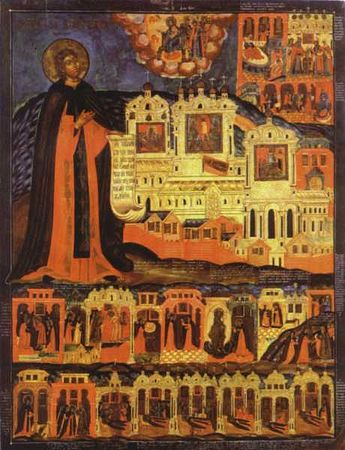 The Monk Joasaph of Kamensk, Vologda Wonderworker, in the world was named Prince Andrei (Andrew). His parents – prince Dimitrii Vasil'evich of Lesser Zaozersk (a descendant of holy Nobleborn Prince Theodore (Feodor) Rostislavich, of Smolensk and Yaroslavl'), and princess Maria – were known for their deep piety, which they imparted to the future ascetic. At twenty years of age Prince Andrei accepted tonsure at the Kubensk Spaso-Kamenyi monastery with the name Joasaph, in honour of Saint Joasaph, son of an emperor of India (Comm. 19 November). The Monk Joasaph gained a good reputation for himself by complete obedience, keeping of the fasts, zeal in prayer and love for books. The brethren of the monastery were amazed at the gracious meekness and sincerity of mind of the young ascetic. Under the spiritual nurture of the experienced elder Grigorii (Gregory), afterwards bishop of Rostov, Saint Joasaph progressed in virtue. He led the life of an hermit in his cell and attained to high spiritual talents. Saint Joasaph asceticised at the Spaso-Kamenyi monastery over the course of five years. In the final year of his life he partook of food only once during the week and communed the Holy Mysteries each Sunday. Before his end the monk took his farewell from the brethren, consoling and admonishing the monks not to grieve over his parting. In the presence of the brethren the monk made the monastic rule, said prayer to the Lord and to the Mother of God, then he lay down upon his death bed and quietly died with prayer on his lips, on the day of 10 September 1453. The Monk Joasaph of Kamensk, Vologda Wonderworker, in the world was named Prince Andrei (Andrew). His parents – prince Dimitrii Vasil'evich of Lesser Zaozersk (a descendant of holy Nobleborn Prince Theodore (Feodor) Rostislavich, of Smolensk and Yaroslavl'), and princess Maria – were known for their deep piety, which they imparted to the future ascetic. At twenty years of age Prince Andrei accepted tonsure at the Kubensk Spaso-Kamenyi monastery with the name Joasaph, in honour of Saint Joasaph, son of an emperor of India (Comm. 19 November). The Monk Joasaph gained a good reputation for himself by complete obedience, keeping of the fasts, zeal in prayer and love for books. The brethren of the monastery were amazed at the gracious meekness and sincerity of mind of the young ascetic. Under the spiritual nurture of the experienced elder Grigorii (Gregory), afterwards bishop of Rostov, Saint Joasaph progressed in virtue. He led the life of an hermit in his cell and attained to high spiritual talents. Saint Joasaph asceticised at the Spaso-Kamenyi monastery over the course of five years. In the final year of his life he partook of food only once during the week and communed the Holy Mysteries each Sunday. Before his end the monk took his farewell from the brethren, consoling and admonishing the monks not to grieve over his parting. In the presence of the brethren the monk made the monastic rule, said prayer to the Lord and to the Mother of God, then he lay down upon his death bed and quietly died with prayer on his lips, on the day of 10 September 1453. |